ERAA 2024 Edition
Key takeaways
ERAA 2024 shows that significant volumes of fossil-fuelled capacity are likely to become economically non-viable by 2030, as they will capture a smaller market share due to the rise of renewable energy sources. Action is therefore needed to maintain the security of electricity supply in Europe.
In the short- and midterm (2026, 2028, 2030), significant capacities are at risk of being decommissioned. In the longer term (2035), decommissioning risks remain for the thermal generation fleet in certain regions, though global investments could occur under favourable conditions not modelled in ERAA. These include supply chain considerations, energy transmission networks, and primary energy availability.
The development of the power system must be closely monitored to confirm that investment needs are being realised. Relevant authorities should consider mitigation actions to secure European adequacy. The report assumes many investments will be driven by scarcity prices during high demand or supply constraints, especially when peak units are needed. However, risk-averse investors may postpone decisions without long-term contracts.
Decommissioning of existing power plants should also be monitored to ensure it does not exceed anticipated levels. Renewable generation capacity is expected to grow based on national policy targets and TSO estimates. Yet, due to intermittency, this will not fully compensate for declining dispatchable thermal capacity or increased electrification by 2035.
ERAA modelling suggests that over 50 GW of new fossil gas flexible capacity would be beneficial given anticipated high scarcity prices, though these are expected to occur infrequently in 2035. This capacity would help ensure adequacy during peak times or low RES infeed. Yet, to meet EU climate goals, fossil-fuelled capacity must be reduced or replaced over time. Market signals based on rare scarcity hours may not justify investment, particularly when driven by rare extreme weather events. Relying solely on EVA-based new entry capacity could underestimate adequacy risks.
Notable risks exist across Europe, though the Balkan region and some areas face lower risks. Some non-market resources help mitigate risk where it would otherwise be high (e.g., Ireland).
Targeted interventions and long-term market mechanisms are essential to avoid further risks. Supporting mechanisms and capacity markets must be accelerated. To ensure electricity security and meet climate objectives, Europe must accelerate the deployment of flexibility solutions and infrastructure, including cross-border electricity transmission network to direct RES electricity where it is most needed, as well as storage and other sources of flexibility, while safeguarding security of supply at all times.
The ERAA should be considered in conjunction with national resource adequacy assessments (NRAAs) to inform EU Member States and National Regulatory Authorities (NRAs) about the level of security of supply and serves as the basis for decisions on different market design options. NRAAs provide a complementary, more detailed picture on national specificities and local sensitivities, complementing the ERAA’s comprehensive pan-European overview of capacity concerns.
Lastly, ENTSO-E believes that the primary purpose of the ERAA goes far beyond merely a tool for decisions on CMs. The ERAA supports policymakers in building midterm strategies. It includes pioneering methodologies and tools to analyse future adequacy with an unmatched level of scope and detail, making it a valuable resource for shaping the future of Europe’s electricity grids. ERAA also has the potential to illustrate additional ‘what if’ scenarios, providing insights into possible future outcomes. Therefore, ENTSO-E believes the ERAA Methodology should be improved and streamlined to empower policy-makers to make well-informed decisions that support national and EU objectives going forward. Methodological innovation, pilot programmes, stakeholder consultation and refinement of its scope will continue to strengthen the ERAA’s usefulness.
Main findings
Economic Viability Assessment Findings
The EVA suggests that substantial generation capacity is at risk of not guaranteeing revenues to sustain its operation and presence in the energy-only market. Meanwhile market opportunities for DSR technology are available across all future years. The decrease in fossil fuel capacity within the system may be steeper than currently anticipated by 2030. Meanwhile the post-EVA capacity graph suggests that market opportunities tend to increase over time, with more capacity expected to be viable in the longer term. This suggests that the expected electrification may not be fully addressed by the current projections for RES and other technology expansion. This is particularly evident in 2035, as substantial fossil fuel capacity will reach the end of its lifetime between 2030 and 2035.
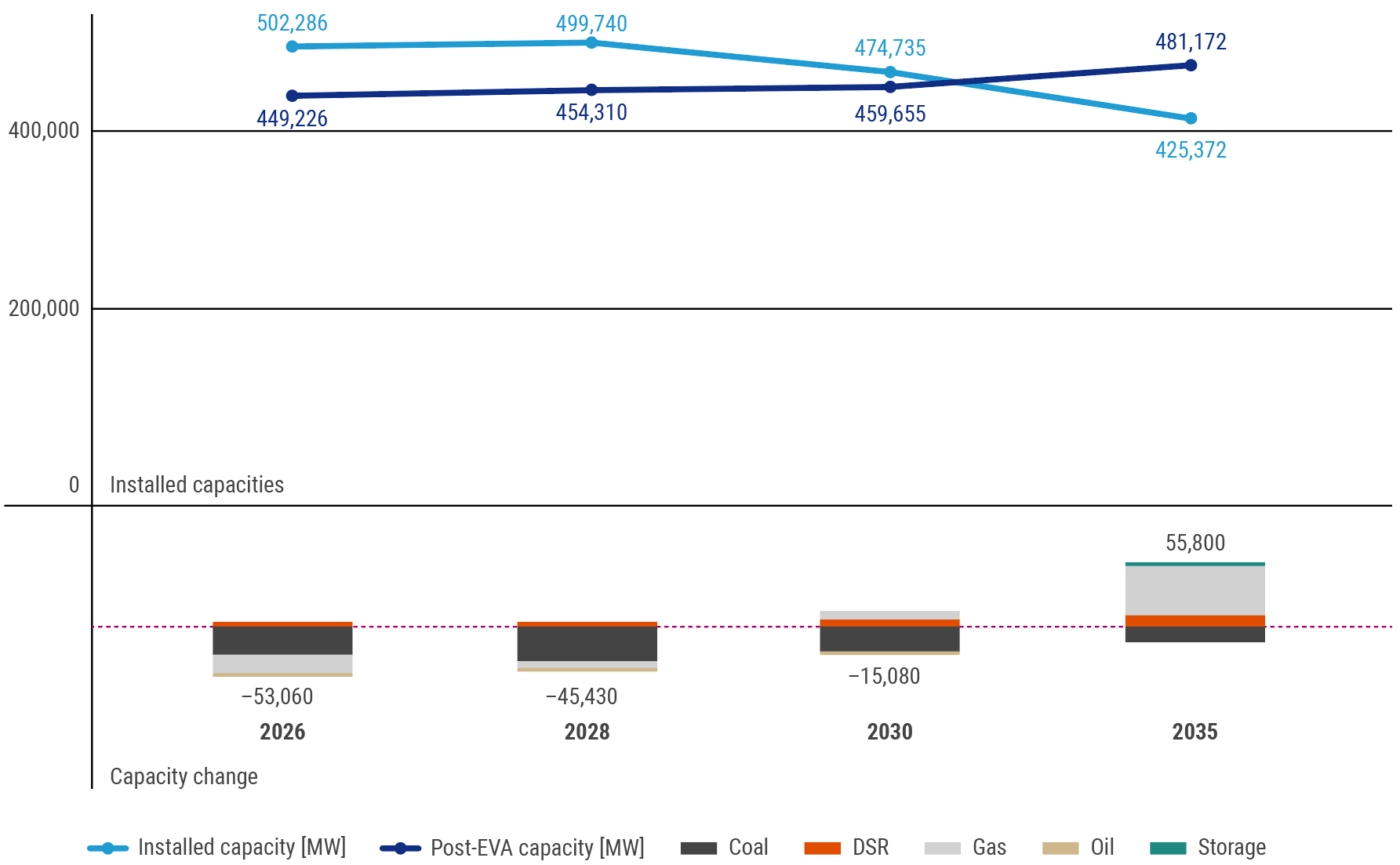
The ERAA 2024 EVA suggests notable investments and lifetime extensions in the coming years. If this new capacity were not fully materialised, adequacy concerns would be significantly higher. By 2035, a net increase of more than 60 GW of flexible fossil gas capacity (OCGT and CCGT) is projected, with investments driven by scarcity prices that occur infrequently. The running hours of some new gas capacity would likely be under 500 full-load hours. A risk-averse investor is more likely to postpone investments that carry high risks.
Adequacy Findings
The results of the EVA have, naturally, a significant impact on the adequacy assessment. Adequacy risks appear in several European countries and margins are tight. The scarcity risks tend to stay in the central parts of the continent.
The LOLE values are represented by circles, with larger radius for larger LOLE values. A region’s LOLE is calculated by averaging the Loss of Load Duration (LLD), i.e. hours with unserved energy, resulting from all the simulated Monte Carlo Years using the reference tool.
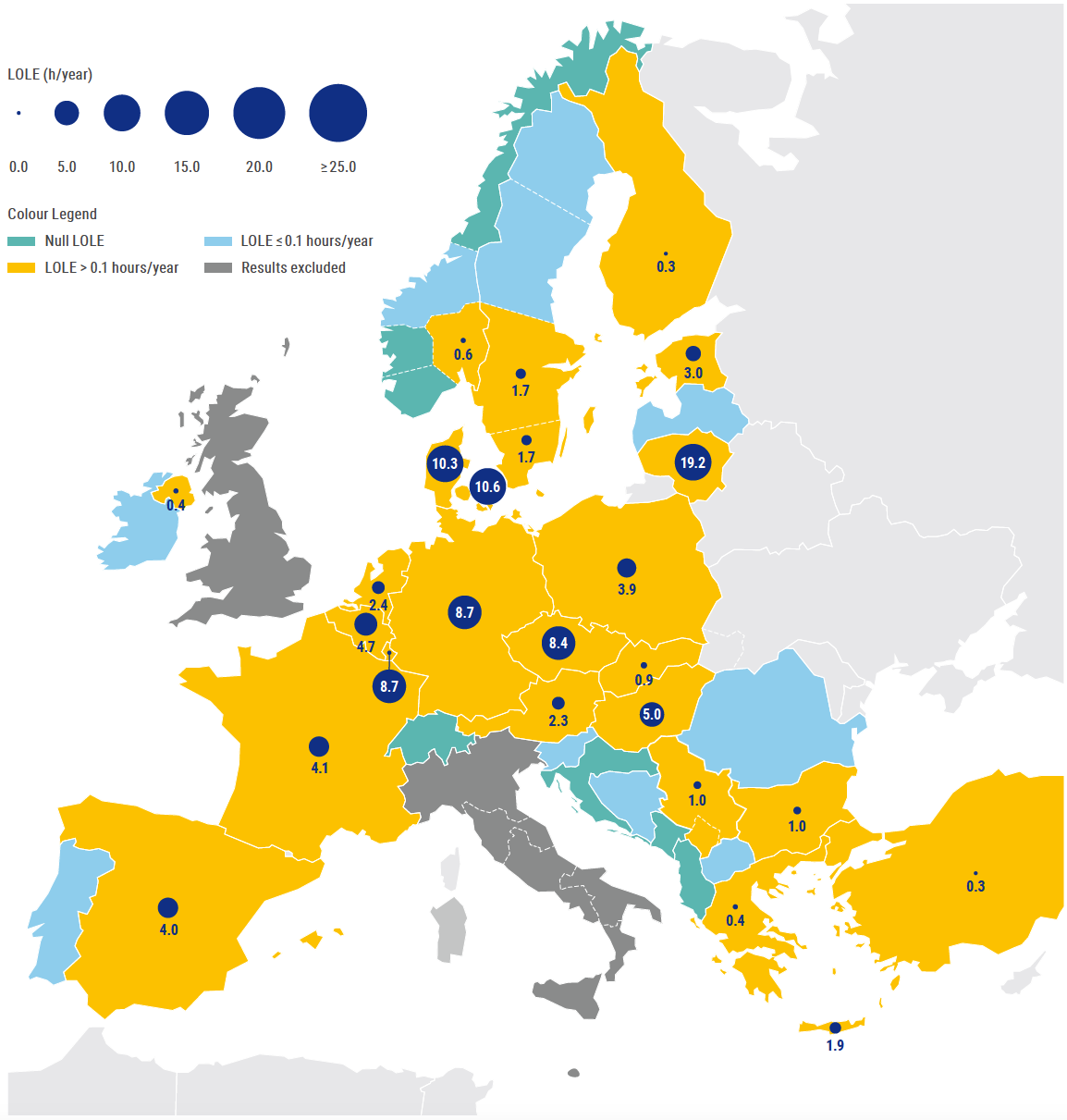
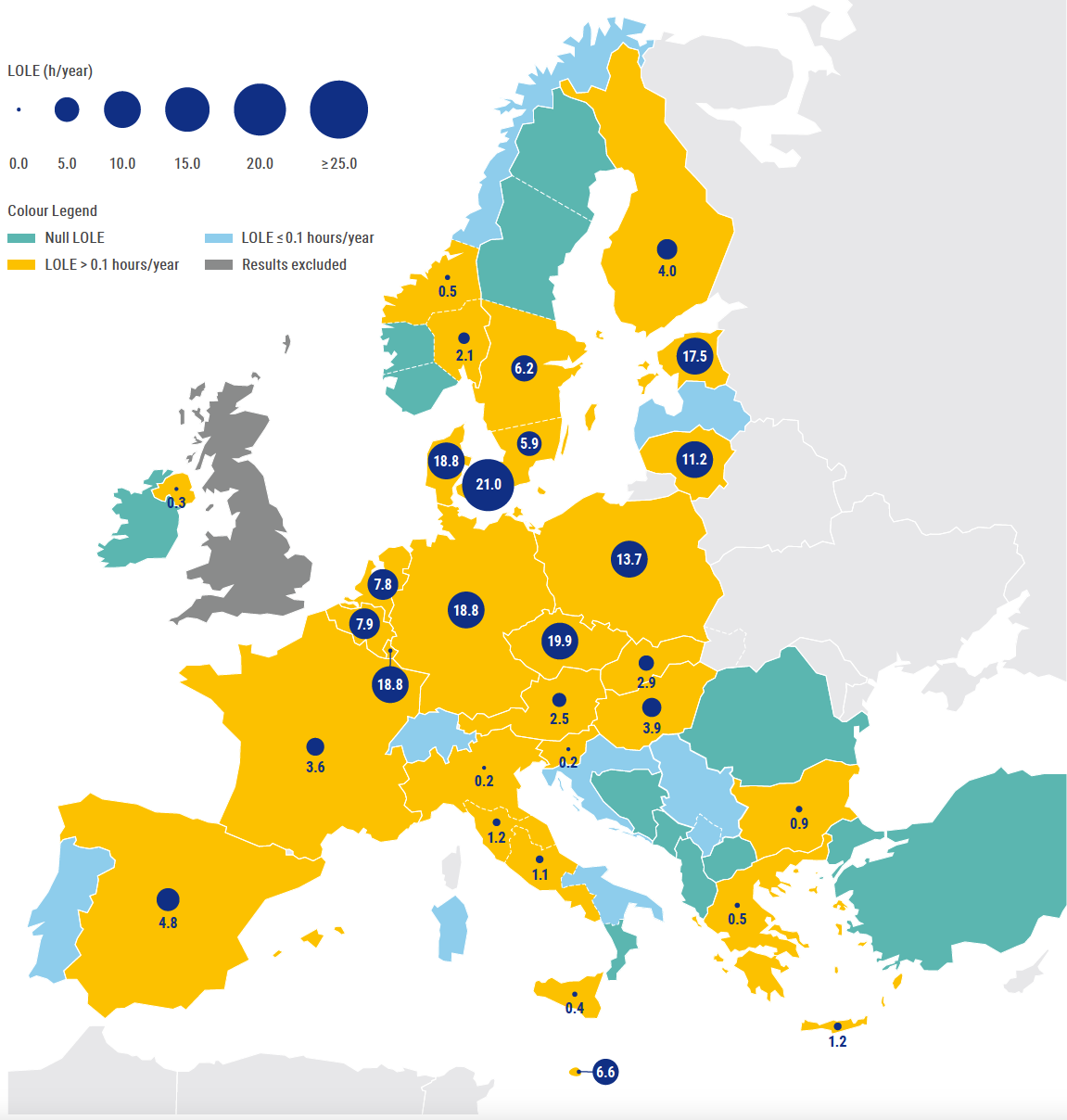
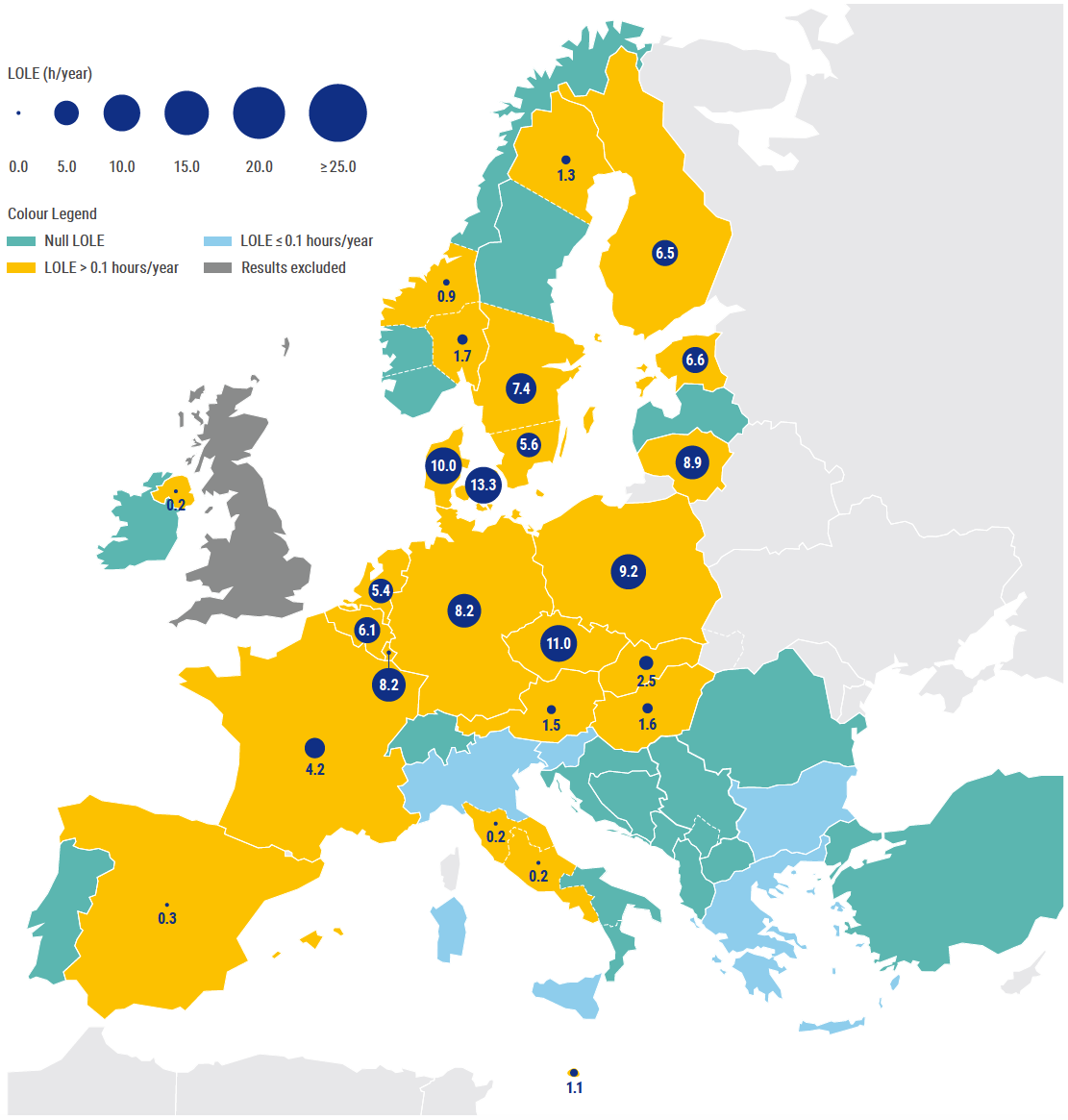
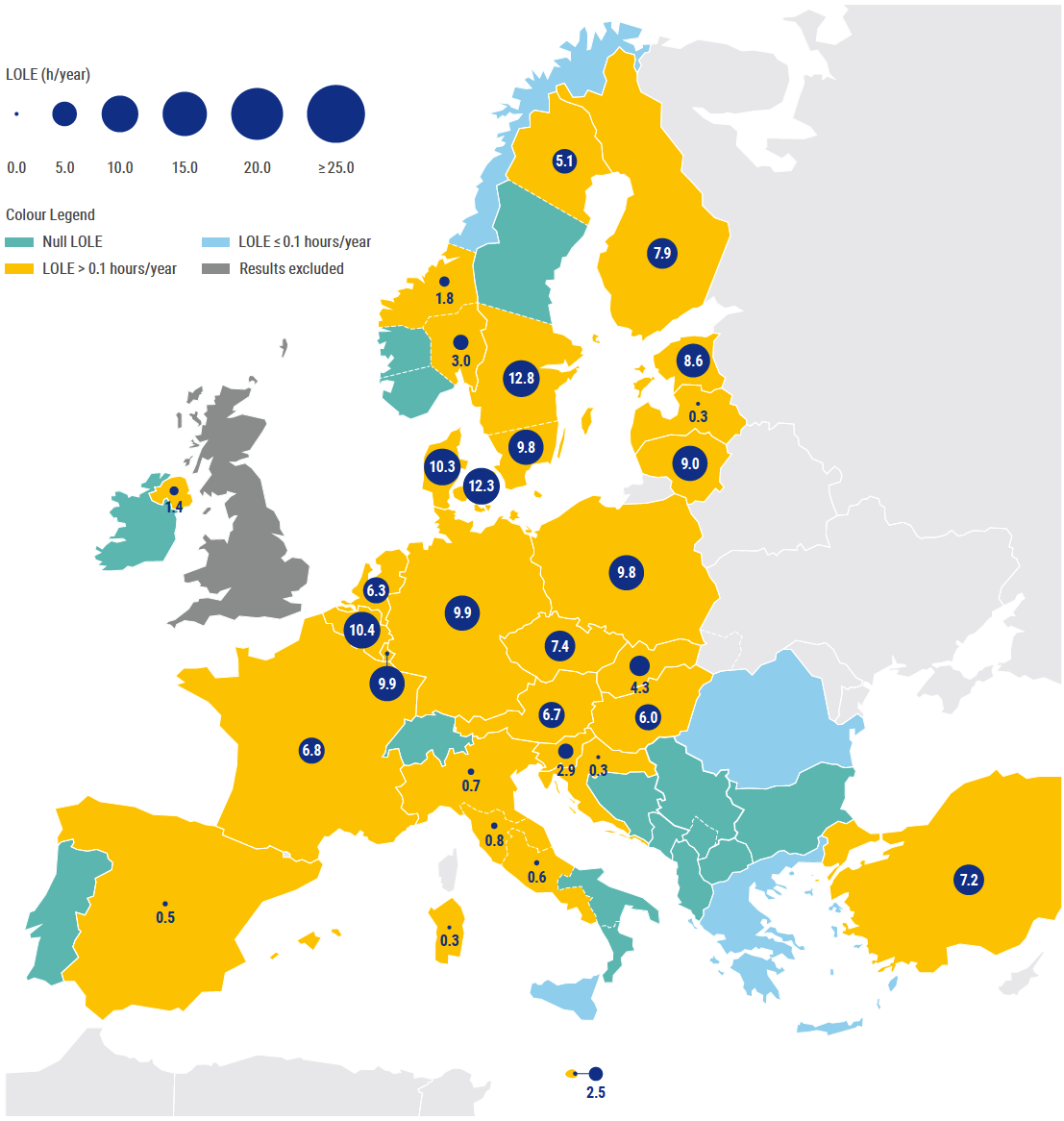
More detailed results, including Expected Energy Not Served (EENS) per region, can be found in Annex 3. For the methodology and probabilistic indicators, please see Annex 2. Moreover, there are cases where the results depend on the specific characteristics of each country or study zone. Annex 4 provides country-specific comments that enable more detailed conclusions.
Further remarks on result interpretation
Being an inherently complex study, ERAA is characterised by a significant degree of uncertainty and computational constraints. Thus, modelling decisions, assumptions in addition to the probabilistic nature of the assessment must be considered when interpreting the results.
The 2024 ERAA features considerable improvements over the previous edition. In addition, assumptions for a given target year (TY) can change rapidly from one edition to another due to the accelerating energy transition. As a result, comparisons between successive edition must be made with caution, considering updates and differences between the two products. These include updates and changes in assumptions and scenarios, as well as modelling improvements that can significantly impact adequacy results.
 ENTSO-E
ENTSO-E